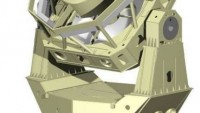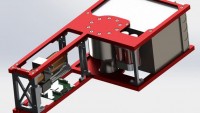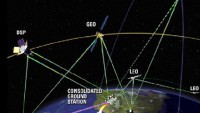US has Space Defense Plan to Protect Satellites from Chinese and Russian Attacks
| Arthur Dominic Villasanta | | Nov 02, 2016 10:01 PM EDT |
(Photo : esa) Map of satellites and large debris orbiting the Earth.
The Chinese and the Russians have always boasted one of the first things they'd do in a war against the United States is to destroy key U.S. military satellites and the GPS satellite system, and the U.S. Air Force is now spending another $5.5 billion to ensure this doesn't happen in the world's first space war.
Like Us on Facebook
The threat to U.S. satellites comes from anti-satellite (ASAT) weapons such as missiles or from satellites built specifically to disable or destroy other satellites. The strategy being pursued by the Air Force and the Pentagon will better defend U.S. satellites against ASAT threats.
The Air Force will invest some $5.5 billion over the next five years to accomplish this goal. It will derive guidance from a "space situational awareness" review in 2015. The review revealed key space security issues that were the result of several years of space-focused analysis and research.
A key result of this review is the Air Force's multi-dimensional space weapons defense plan which it adopted in early 2016
The Air Force noted that Russia and China know how the U.S. uses space to defend its national security and are naturally devising capabilities to deny the U.S. the full use of its vast fleet of satellites, both military and civilian.
As of this June, there were 1,419 operating satellites of which the U.S. has 576. Russia has 140 satellites; China, 181 and the rest of the world, 582.
The United States relies on its networks of intelligence gathering, communications and navigation satellites to preserve its military advantage over Russia and China, but these satellites are quite vulnerable to ASAT weapons and ground-based lasers.
U.S. satellites, however, aren't quite as vulnerable as everyone thinks, according to one Air Force officer.
A solution to satellite defense problem is developing what the Air Force calls more "resilient" space assets.
This resiliency involves deploying multiple satellites to achieve the same goal so the loss of one or two satellites won't wipe out an entire system. It also involves using military equipment that can use both the U.S. GPS and Europe's Galileo navigation system. This allows U.S. warfighters to switch to Galileo were some of its GPS satellites destroyed.
U.S. military sats are also being spread farther apart while deception tactics confuse the enemy as to the true function of satellite or satellites. This just means no satellite is indispensable.
Satellites can also be "hardened" to withstand severe electronic warfare attacks.
TagsU.S. Air Force, Satellites, anti-satellite (ASAT) weapons, GPS, Galileo navigation system
©2015 Chinatopix All rights reserved. Do not reproduce without permission
 NASA Eyes ‘Photonics’ and Laser Communications to Talk to Mars-bound Spacecraft
NASA Eyes ‘Photonics’ and Laser Communications to Talk to Mars-bound Spacecraft US Air Force Takes Control of Powerful DARPA Space Telescope for Tracking Spy Satellites
US Air Force Takes Control of Powerful DARPA Space Telescope for Tracking Spy Satellites Water-powered Satellite to Orbit the Moon
Water-powered Satellite to Orbit the Moon Alibaba to Orbit World's First e-commerce Satellite; Might Also Launch Other Satellites
Alibaba to Orbit World's First e-commerce Satellite; Might Also Launch Other Satellites New US Missile Warning Satellites Make China’s DF-41 ICBM More Vulnerable
New US Missile Warning Satellites Make China’s DF-41 ICBM More Vulnerable
EDITOR'S PICKS
-

Did the Trump administration just announce plans for a trade war with ‘hostile’ China and Russia?
-

US Senate passes Taiwan travel bill slammed by China
-

As Yan Sihong’s family grieves, here are other Chinese students who went missing abroad. Some have never been found
-

Beijing blasts Western critics who ‘smear China’ with the term sharp power
-

China Envoy Seeks to Defuse Tensions With U.S. as a Trade War Brews
-

Singapore's Deputy PM Provides Bitcoin Vote of Confidence Amid China's Blanket Bans
-

China warns investors over risks in overseas virtual currency trading
-

Chinese government most trustworthy: survey
-

Kashima Antlers On Course For Back-To-Back Titles
MOST POPULAR
LATEST NEWS
Zhou Yongkang: China's Former Security Chief Sentenced to Life in Prison

China's former Chief of the Ministry of Public Security, Zhou Yongkang, has been given a life sentence after he was found guilty of abusing his office, bribery and deliberately ... Full Article
TRENDING STORY

China Pork Prices Expected to Stabilize As The Supplies Recover

Elephone P9000 Smartphone is now on Sale on Amazon India

There's a Big Chance Cliffhangers Won't Still Be Resolved When Grey's Anatomy Season 13 Returns

Supreme Court Ruled on Samsung vs Apple Dispute for Patent Infringement

Microsoft Surface Pro 5 Rumors and Release Date: What is the Latest?










